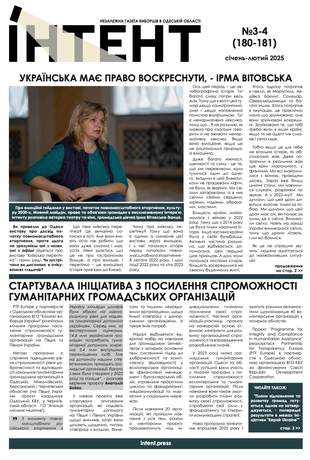Меню
Social networks
May 9, 2025, 12:23 p.m.
Odesa - Its Happiness and Curse: Historian Ihor Stambol on the Contradictory Image of the City
Цей матеріал також доступний українською29
What was Odesa like in the nineteenth century and what does it look like today? Historian and writer Ihor Stambol calls this city a commercial, disorderly, and at the same time globally recognizable brand.
In an interview with Intent, the researcher discusses why the image of the city, despite its romanticization, remains controversial.
"In the nineteenth century, this city was definitely a maritime city. It is definitely about different nationalities, but united by one goal. Not by culture, but united by trade, united by monetary benefits," says Stambol.
According to the historian, Odesa's growth was frantic, thanks to its seaport, convenient location, and trade. But this was the reason why the city was chaotic and sometimes dangerous: "Frantic economic growth is great. But it happens that you can't keep up with it all, and that's why it became gangland... Because not everything could be controlled."
Stambaugh also told an interesting historical episode related to Mark Twain. He said that the American writer accidentally ended up in Odesa during a cruise-he didn't plan it, but the ship stopped here. According to speculation, it was here that he could see the image of a tramp, which was later embodied in the image of Huckleberry Finn.
"And this is very interesting. It actually speaks of our inclusion. Odesa is still famous. This is its happiness and its curse," the historian emphasized.
However, today's attempts to represent Odesa in the world as a city with an exclusively multicultural image, according to him, often distort reality and can even be harmful.
"They either want multiculturalism without noticing Ukrainians. And why is it important to return to the Ukrainian context? Because any other context will not protect us. Only the Ukrainian context will protect us. Only if we build a strong identity here, no Muscovite will want to come here, because he will know that he is not welcome here," the historian explained.
Stambol noted that Odesa still retains the features of a city that lives by trade, where the main thing is the opportunity to make money. This Handelian essence can be traced both in everyday life and in urban communication: "The image of the city, I would say, is a bit disordered, definitely focused on trade, on handel or handle, not even crafts, on making money... even today, if we compare it with other cities in Ukraine, I think this tradition has been preserved here."
He also mentioned how the character of Odesa is felt even through online shopping. Orders from Odesa, he said, often have their own specifics - in the manner of communication, the quality of goods, and the approach to the client: "This specificity is not always pleasant... I'm talking about marketing and communication. The way it is fashionable today, to respect all rights and boundaries, is not quite here yet."
The historian believes that the current stage of Ukrainian history is a period of uncertainty, which also affects Odesa. Today, in his opinion, the gangster component of the city's image has decreased, but at the same time, another source of anxiety has emerged.
"There are a lot of weapons in the hands of many strange people who are solving certain issues," he added.











